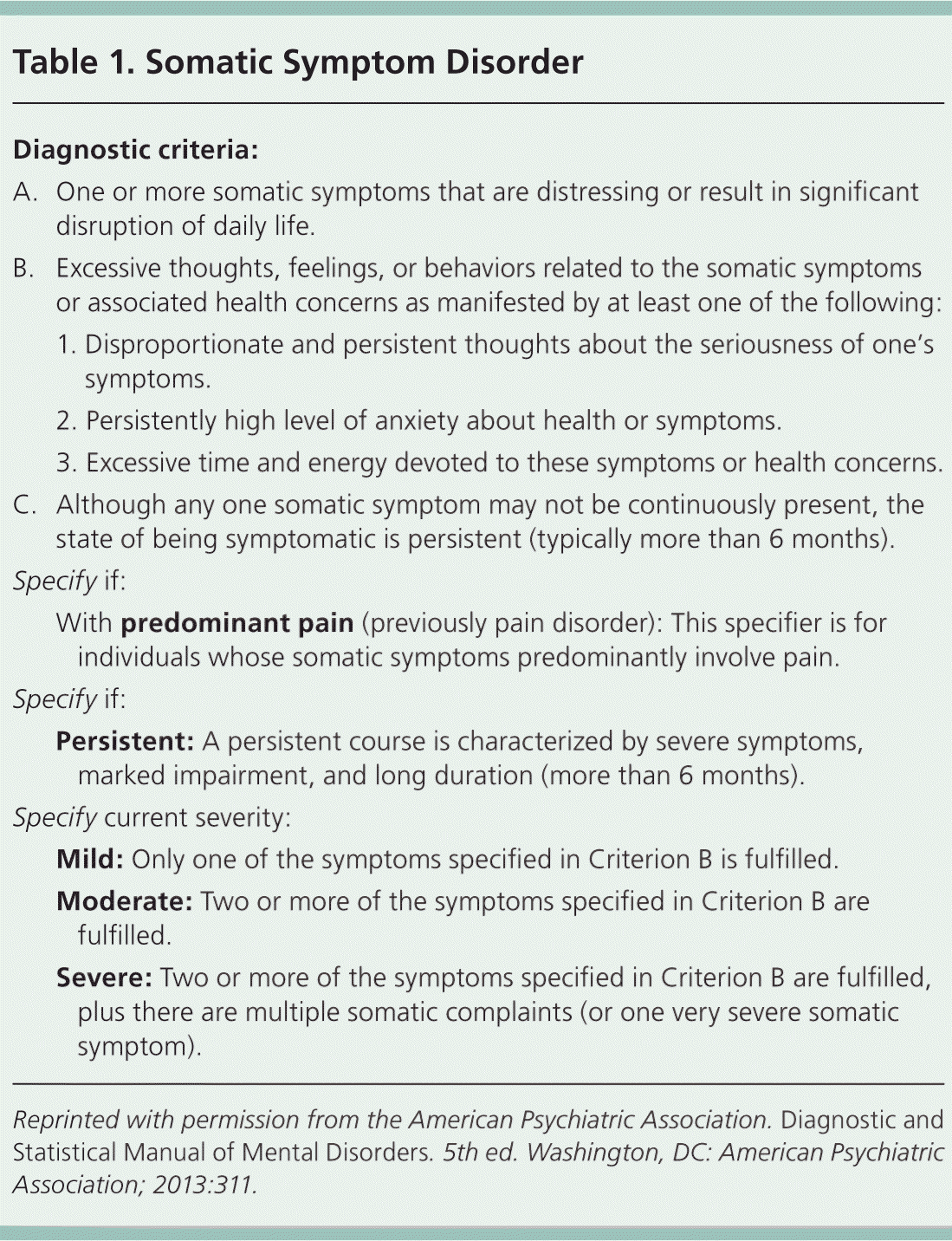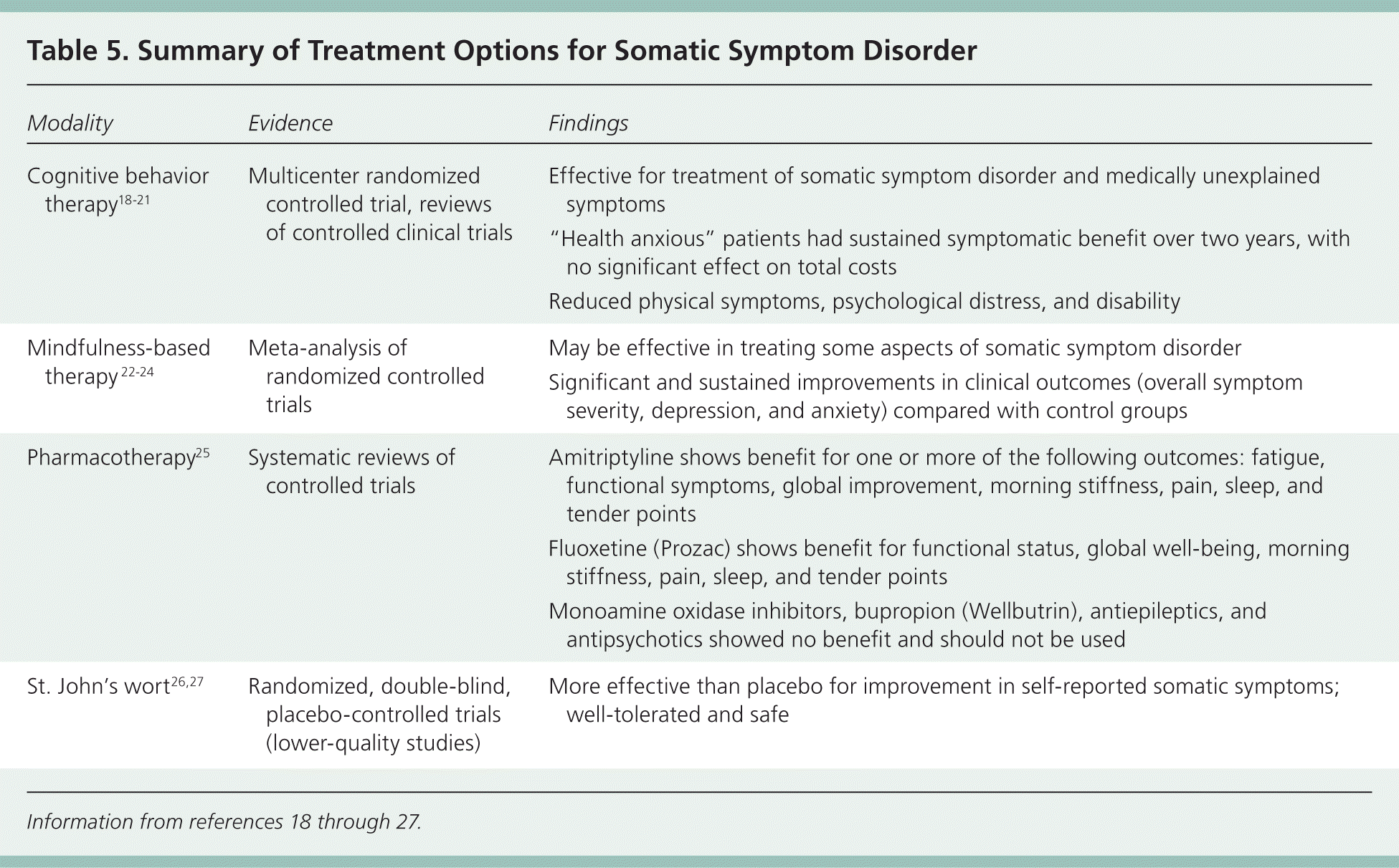Introduction
Somatic Symptom and Related Disorders (SSRDs) represent a cluster of psychiatric conditions in which individuals experience physical symptoms or health concerns that are not fully explained by organic pathology. While bodily complaints are common in the general population, SSRDs are distinguished by the disproportionate psychological distress, maladaptive health-related behaviors, and impaired functioning that accompany these symptoms (American Psychiatric Association [APA], 2013). These disorders include Somatic Symptom Disorder, Illness Anxiety Disorder, Conversion Disorder, and Factitious Disorder. The focus here is on Illness Anxiety Disorder (IAD), Conversion Disorder (Functional Neurological Symptom Disorder), and Factitious Disorder.

Somatic Symptom Disorder
SSRDs are of major clinical importance because they not only create significant suffering for patients but also increase healthcare utilization, often leading to unnecessary diagnostic tests, treatments, and costs (Butcher, Mineka, & Hooley, 2014).
Read More: ICD vs DSM
Classification of Somatic Symptom and Related Disorders
The DSM-5 (APA, 2013) classifies SSRDs into multiple subtypes. While Somatic Symptom Disorder serves as the umbrella category, three related disorders are particularly relevant:

Somatic Symptom and Related Disorders
1. Illness Anxiety Disorder (IAD)
A preoccupation with the fear of having or acquiring a serious illness despite minimal or absent somatic symptoms.
Features:
- High levels of health anxiety.
- Repeated health-related behaviors (e.g., body checking, frequent medical visits).
- Avoidance of medical care in some cases, due to fear of discovering illness.
Differentiation: Unlike Somatic Symptom Disorder, the concern is about the idea of illness rather than distress from symptoms (APA, 2013; Nevid, Rathus, & Greene, 2014).
2. Conversion Disorder (Functional Neurological Symptom Disorder)
Neurological-like symptoms (e.g., paralysis, blindness, seizures, aphonia) that cannot be explained by medical conditions.
Features:
- Symptoms often arise after stress or trauma.
- Inconsistencies with recognized neurological diseases.
- Sometimes associated with a phenomenon called la belle indifférence—a paradoxical lack of concern for the disability (Carson, Butcher, Mineka, & Hooley, 2007).
Differentiation: Unlike malingering or factitious disorder, symptoms are not intentionally produced.
3. Factitious Disorder
The intentional falsification or induction of symptoms in oneself (or another, in the case of Factitious Disorder Imposed on Another, historically called Munchausen Syndrome by Proxy).
Features:
- Motivation is to assume the “sick role” and receive attention, care, or sympathy.
- No external incentives such as financial gain or avoiding responsibilities (Comer, 2007).
Differentiation: Distinguished from malingering, where symptoms are produced for tangible external benefits.
The ICD-10 (World Health Organization, 1992) also recognizes hypochondriacal disorder (similar to IAD), dissociative (conversion) disorders, and factitious disorders under related diagnostic categories, highlighting the global recognition of these conditions.
Etiological Factors
The etiology of SSRDs is multifactorial, involving biological, psychological, and social dimensions.
1. Biological Factors
- Genetic Vulnerability: Family studies show increased prevalence of health anxiety and somatic concerns among first-degree relatives (Butcher et al., 2014).
- Brain Mechanisms: Abnormal activity in the anterior cingulate cortex, insula, and prefrontal regions, which regulate perception of pain and bodily sensations (Carson et al., 2007).
- Autonomic Nervous System Dysfunction: Heightened physiological arousal may intensify perception of normal bodily sensations (Barlow & Durand, 2005).
2. Psychological Factors
- Cognitive-Behavioral Models: Individuals misinterpret benign bodily sensations as threatening, leading to catastrophic thinking and health anxiety (Nevid et al., 2014).
- Psychodynamic Perspective: Conversion symptoms may represent unconscious conflict expressed physically, reducing anxiety through symbolic expression (Sarason & Sarason, 2002).
- Personality Factors: Traits such as neuroticism and alexithymia (difficulty identifying and expressing emotions) contribute to somatic symptom reporting (Davison, Neal, & Kring, 2004).
3. Social and Cultural Factors
- Family and Reinforcement: Sick role behaviors may be inadvertently reinforced by family members who provide care and attention.
- Cultural Variations: In cultures where direct expression of psychological distress is stigmatized, individuals may present psychological conflict as somatic complaints (Oltmanns & Emery, 1995).
- Stress and Trauma: High rates of childhood abuse and neglect are found in patients with conversion and factitious disorders (Nolen-Hoeksema, 2004).
Clinical Features and Diagnosis
Diagnosing SSRDs is complex because clinicians must balance avoiding mislabeling genuine medical conditions with recognizing excessive health-related anxiety.
- Illness Anxiety Disorder: Persistent worry about illness, despite reassurance and negative test results.
- Conversion Disorder: Symptoms often incompatible with neurological findings (e.g., glove anesthesia, inconsistent paralysis).
- Factitious Disorder: Evidence of intentional falsification, such as manipulating laboratory tests, injecting substances, or falsifying medical histories (APA, 2013).
The DSM-5 criteria and ICD-10 guidelines emphasize the disproportionate distress, maladaptive behaviors, and persistence of symptoms as diagnostic markers (APA, 2013; WHO, 1992).
Treatment Approaches
Some of the treatment approaches include:

Treatment for SSRD
1. Psychotherapy
- Cognitive-Behavioral Therapy (CBT): Helps patients reinterpret bodily sensations, reduce catastrophic thinking, and limit checking/reassurance-seeking behaviors. Effective in both Illness Anxiety Disorder and Somatic Symptom Disorder (Barlow & Durand, 2005).
- Psychodynamic Therapy: Addresses unconscious conflicts expressed in conversion symptoms. Explores trauma and emotional expression (Sarason & Sarason, 2002).
- Supportive Therapy and Psychoeducation: Normalizes experiences, reduces stigma, and promotes healthier coping mechanisms (Comer, 2007).
2. Pharmacological Interventions
- Antidepressants (SSRIs): Beneficial in reducing anxiety, depressive symptoms, and preoccupation with illness (Nolen-Hoeksema, 2004).
- Anxiolytics: May be used short-term but are not recommended for long-term treatment due to dependence risks.
3. Multidisciplinary Care
- Collaboration between primary care physicians, psychiatrists, and psychologists prevents unnecessary medical interventions while ensuring the patient feels heard (Carson et al., 2007).
- Regular scheduled visits help reduce emergency consultations and reinforce consistent care.
4. Special Considerations for Factitious Disorder
- Confrontation with Caution: Direct confrontation often leads to denial or treatment dropout. A supportive, non-judgmental approach is preferred (Butcher et al., 2014).
- Hospital Safety Protocols: In factitious disorder imposed on another, safeguarding the victim (often a child) is paramount, requiring legal and ethical interventions (Mental Health Care Act, 2017).
Challenges in Treatment
- Patients often resist psychiatric referral, believing their illness is strictly physical.
- High rates of comorbidity with depression, anxiety disorders, and personality disorders complicate treatment (Davison et al., 2004).
- The stigma associated with being told symptoms are “all in the head” hinders treatment engagement (Sue, Sue, & Sue, 2006).
Conclusion
Somatic Symptom and Related Disorders—particularly Illness Anxiety Disorder, Conversion Disorder, and Factitious Disorder—are complex conditions that lie at the intersection of mind and body. They challenge clinicians to differentiate genuine medical illness from psychological distress expressed through somatic symptoms. Their etiology is multifactorial, involving biological vulnerabilities, psychological mechanisms, and sociocultural influences.
Effective treatment requires a multimodal approach, combining CBT, supportive psychotherapy, pharmacological interventions, and coordinated medical care. For Factitious Disorder, additional ethical and safeguarding measures may be necessary. Increasing awareness, reducing stigma, and promoting integrated care models are crucial for improving outcomes in these disorders.
References
American Psychiatric Association. (2013). Diagnostic and Statistical Manual of Mental Disorders (5th ed.). Arlington, VA: APA.
Andrew, M. (2011). Clinical psychology: Science, practice, and culture (2nd ed.). Sage Publications.
Alloy, L. B., Riskind, J. H., & Manos, M. J. (2005). Abnormal Psychology: Current Perspectives (9th ed.). Tata McGraw-Hill.
Barlow, D. H., & Durand, V. M. (2005). Abnormal Psychology (4th ed.). Pacific Grove: Brooks/Cole.
Butcher, J. N., Mineka, S., & Hooley, J. M. (2014). Abnormal Psychology (15th ed.). Pearson Education.
Carson, R. C., Butcher, J. N., Mineka, S., & Hooley, J. M. (2007). Abnormal Psychology (13th ed.). Pearson.
Comer, R. J. (2007). Abnormal Psychology (6th ed.). Worth Publishers.
Davison, G. C., Neal, J. M., & Kring, A. M. (2004). Abnormal Psychology (9th ed.). Wiley.
Nevid, J. S., Rathus, S. A., & Greene, B. (2014). Abnormal Psychology (9th ed.). Pearson Education.
Nolen-Hoeksema, S. (2004). Abnormal Psychology (3rd ed.). McGraw Hill.
Oltmanns, T. F., & Emery, R. E. (1995). Abnormal Psychology. Prentice Hall.
Sarason, I. G., & Sarason, R. B. (2002). Abnormal Psychology: The Problem of Maladaptive Behavior (10th ed.). Pearson Education.
Sue, D., Sue, D. W., & Sue, S. (2006). Abnormal Behavior (8th ed.). Houghton Mifflin.
World Health Organization. (1992). The ICD-10 Classification of Mental and Behavioural Disorders: Clinical Description and Diagnostic Guidelines. Oxford University Press.
The Mental Health Care Act (2017). Government of India.
Niwlikar, B. A. (2025, October 6). 3 Important Somatic Symptom and Related Disorders. Careershodh. https://www.careershodh.com/somatic-symptom-and-related-disorders/
